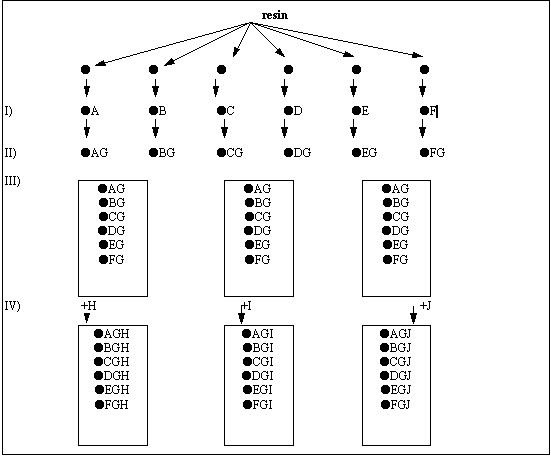Solid Phase SynthesisA common combinatorial technique uses organic synthesis on solid support. Linker groups are attached to resin beads in the solid phase and the reactants are passed over in solution to make the intermediates and a final detachment-from-resin reaction is run to get the desired product out of the column.
This type of resin reaction can be miniaturized (up to 5 beads per reaction vial) and each base resin can be altered slightly to get an exponential growth in the number of final products. Trends in Combinatorial chemistry

Solid phase synthesis has found praise in its ability to separate the resin-attached targets from large amounts of excess reagents and impurities. But this area is still growing with respect to isolating target molecules that are smaller than the peptides the synthesis was originally developed for. Analytical methodologies are lacking in the area as well. [1]
1) Chaiken, I.M. ed. and Janda, K.D. ed. Molecular Diversity and Combinatorial Chemistry. American Chemical Society. Washington D.C. 1996. Chapter 14
HomeWhat is Combinatorial Chemistry?
-- Solid Phase Synthesis
-- Future Applications of Combinatorial ChemistryMedicines Derived from Combinatorial Chemistry
The Value of The Rainforests
The Fate of the RainforestMedicines Discovered from rainforest Plants